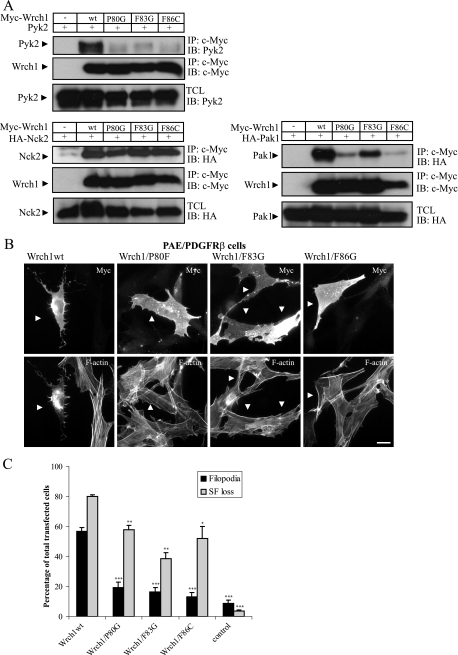FIG. 3.
Pyk2 interaction requires an intact Wrch1 effector loop. (A) Interaction between Myc-tagged Wrch1 or Wrch1 mutants and Pyk2, Pak1, or Nck2 was assessed by transient transfection into HEK293T cells. The presence of Pyk2, Pak1, or Nck2 in Myc immunoprecipitates (IP) was determined by immunoblotting (IB). wt, wild type. (B) Wild-type Wrch1 and Wrch1 effector loop mutants [Wrch1(P80G), Wrch1(F83G), or Wrch1(F86C)] were transiently transfected into PAE/PDGFRβ cells. Myc-tagged Wrch1 was visualized with a rabbit anti-Myc antibody followed by an AMCA-conjugated anti-rabbit antibody. Filamentous actin was visualized Alexa Fluor 488-conjugated phalloidin. The arrowheads mark Wrch1-transfected cells. (C) Quantification of the phenotypes observed in panel B was performed by microscopy analysis and scored as filopodium formation (filopodia) or stress fiber dissolution (SF loss). The values represent analyses of at least 100 transfectants in three independent experiments. The statistics analysis was carried out using Student's t test to compare the phenotypes induced by Wrch1wt to the phenotypes induced by Wrch1 effector loop mutants. * represents P values of <0.05, ** represents P values of <0.01, and *** represents P values of <0.001.

